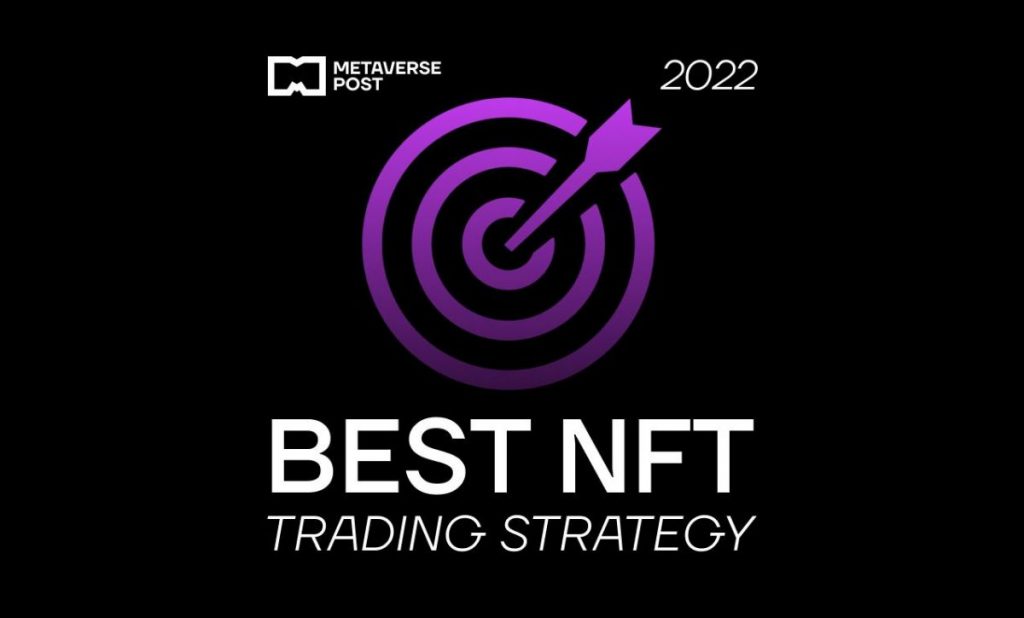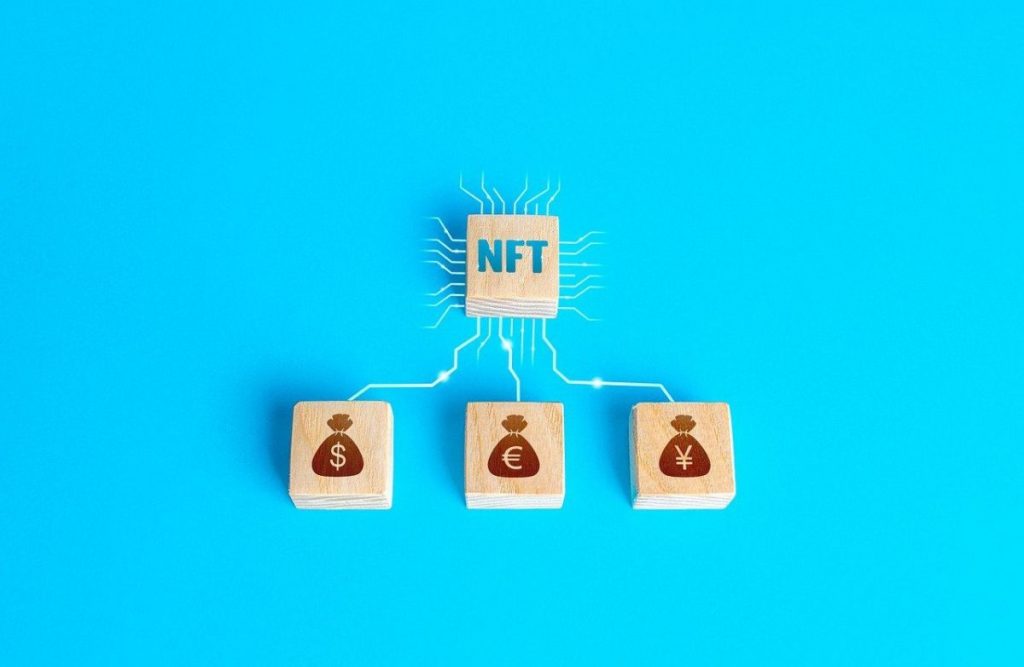5 Best NFT Trading Strategies For Investors in 2023

In Brief
There are a few alternative methods that can be utilized in NFT trading, the buy low, sell high approach is the most popular and simplest to implement
The most crucial thing is to pick an NFT trading strategy that works for you out of the many available options.

A strategy is required for any successful investor, NFT or otherwise. The most important part of NFT trading is knowing when to buy and sell. There are a few different strategies that can be used in NFT trading, but the most common and easiest to follow is the buy low, sell high strategy.
This strategy is exactly what it sounds like; you buy NFTs when the price is low and sell them when the price is high. This is a simple strategy, but it’s also one that is difficult to execute. To successfully buy low and sell high, you need to have a good understanding of the NFT market and the NFTs you’re trading.
Another common NFT trading strategy is the Hodl strategy. This strategy is similar to the buy low, sell high strategy, but instead of selling NFTs when the price is high, you hold on to them for long-term investment.
Best NFT Trading Strategies

1. Find affordable NFTs at floor price
The lowest NFT advertised for sale, which would be the floor price, can be found by sorting the NFT items from a certain collection by price. However, not all inexpensive NFTs assure a profit. That’s why you should always pick an NFT project based on your interests. The best thing you could do is follow the project before it is launched to ensure you’ll receive the best price for an NFT collectible.
2. Search for Google Trends
A superb free resource that provides excellent insights into the general public’s perception of a topic or term is Google Trends. Ratings for word searches range from 0 to 100. A high rating suggests that people are interested in NFT collectibles. It also suggests that now is an excellent time to buy quietly.
3. Value strategy
The NFT value strategy emphasizes buying expensive NFTs. It’s important to note that if you’re just getting started and your budget won’t support it, this may not be the greatest trading technique for you.
4. Buy the ceiling
If you have the funds to invest in NFTs, the ceiling or top is a fantastic choice because these assets are uncommon and in high demand. This implies that if there is greater demand for the project, the cost of ceiling NFTs can increase. In the marketplace, where people can shop by price, these products are also well-liked. They might be advertised as the project’s greatest NFTs in various locations.
5. Look for underpriced NFTs
Any novice NFT investor’s ambition is to discover an underpriced NFT on the market. This approach is independent of market trends and is effective even when there is minimal interest in a particular NFT collection. You must locate NFTs that are now being sold for less than they were purchased for in order to apply this NFT trading approach to profit.
Why You Should Invest in NFT
NFTs offers a unique opportunity for investors. They’re a new asset class that is still in its early stages of development, which means there is a lot of potential for growth. NFTs also offer a number of benefits that other asset classes don’t, such as the ability to be easily traded and stored, and the ability to be used in a number of different ways.
The NFT market is new
Despite the fact that NFTs have a long history, they all began in 2012 with the sale of the first ever NFT, Bitcoin. NFTs are a relatively new asset class, which means there is still a lot of development and growth potential. NFTs are still in their early stages, which presents a unique opportunity for investors.
NFTs are easy to trade and store
NFTs are digital assets that can be stored on a computer or other digital device. They can also be traded easily and quickly using a variety of different platforms. NFTs don’t require the same physical infrastructure as other asset classes, such as real estate or stocks, which makes them much easier to trade and store.
NFTs have a number of uses
NFTs can be used in a number of different ways. They can be used to represent physical objects, such as art or collectibles. They can also be used to represent digital assets, such as music or video files. NFTs can even be used to represent non-fungible tokens, which are themselves a new asset class with a variety of uses.
The NFT market is still small
The NFT market is still relatively small, which presents both risks and opportunities for investors. The small size of the NFT market means that it’s more volatile than other markets, which can be a risk for investors. However, the small size of the NFT market also means that there is more potential for growth.
Why You Should Have an NFT Trading Strategy
NFT trading is a new and exciting way to invest in NFTs. However, it’s important to remember that NFT trading is still a form of investing, which means there is risk involved. In order to minimize your risk and maximize your chances for success, it’s important to have a well-defined NFT trading strategy.
There are a number of different NFT trading strategies, but the most important thing is to find one that works for you. It’s also important to remember that your NFT trading strategy will likely evolve over time as you gain more experience and knowledge about the NFT market.
Having an NFT Trading Strategy Would
- Help you make informed decisions about when to buy and sell NFTs
- Allow you to take advantage of market opportunities
- Help you minimize your risk
- Help you maximize your profits
Basic NFT Strategies for Newbies
The new growth in NFTs has caused many investors to enter the market, which has made NFTs more volatile. In order to take advantage of this volatility, you need to have a well-defined NFT trading strategy.
Estimated Market Cap
Analyzing the NFT market cap can help you understand the overall NFT market and how NFTs are valued. The NFT market cap is the total value of all NFTs in circulation.
NFT Market Depth
The NFT market depth is a measure of the liquidity of the NFT market. The NFT market depth is the total value of NFTs that are available for purchase at the current price.
NFT Volatility
NFT volatility is a measure of how much the price of NFTs can change over time. NFT volatility is typically measured by the standard deviation of NFT prices.
Technical Analysis
Technical analysis is a way of predicting the future price of NFTs by analyzing past price data. Technical analysis is often used in conjunction with other NFT trading strategies.
Fundamental Analysis
Fundamental analysis is a way of predicting the future price of NFTs by analyzing the underlying factors that affect the price of NFTs. Fundamental analysis is often used in conjunction with other NFT trading strategies.
NFT Trading Strategies
There are a number of different NFT trading strategies that you can use. The most important thing is to find a strategy that works for you. It’s also important to remember that your NFT trading strategy will likely evolve over time as you gain more experience and knowledge about the NFT market.
Factors for Evaluating NFT Collectibles
When it comes to NFTs, there are a few key factors you should always consider before making a purchase. Here are a few things to keep in mind:
Purpose of the NFT
It’s important to know why you’re buying the NFT in the first place. Are you buying it as an investment? Are you buying it for use in a specific game or application? Are you buying it because you like the art or because you think it will be valuable in the future?
Rarity of the NFT
The rarity of an NFT can have a big impact on its value. The rarer an NFT is, the more valuable it will be.
Utility of the NFT
The utility of an NFT is also a key factor to consider. An NFT with a lot of utility will be more valuable than an NFT with no utility.
Tokenomics of the NFT
Tokenomics is a term that refers to the economic model of a token or NFT. The Tokenomics of an NFT can have a big impact on its value.
Artist or Creator of the NFT
The artist or creator of an NFT can also have a big impact on its value. If you’re buying an NFT for investment purposes, it’s important to research the artist or creator to see if they have a history of producing NFTs that have gone up in value.
FAQs
Yes, you can make money with NFTs. NFTs are bought and sold on NFT exchanges just like any other asset. You can buy NFTs and hold them for investment purposes or sell them immediately for a profit.
There is no one “best” NFT to buy. It depends on your individual goals and objectives. Some people may want to buy NFTs for investment purposes, while others may want to buy NFTs for use in specific games or applications.
The NFT market cap is the total value of all NFTs in circulation.
Another smart trading technique for NFTs is to ensure that you are not just the first, but also the best in the community. Getting into collections can be accomplished by purchasing at the lowest or highest price point.
The price of your non-fungible token is determined by your NFT marketing strategy, which is developed by NFT experts who construct a digital community of users, reap multiple influencers, use content marketing, and utilize social media to drive higher bids. Higher bids result in a higher NFT selling price.
A thriving community will support a good NFT initiative. Projects that have the most engagement are typically the ones that succeed the best. More than just possessing a work of art, NFTs entail belonging to a community where a culture has developed and where that culture attracts a following.
Conclusion
NFTs are a new and exciting asset class with a lot of potentials. Before you invest in NFTs, it’s important to have a well-defined strategy. There are several different NFT trading strategies that you can use, and the most important thing is to find one that works for you.
You should also keep in mind that your NFT trading strategy will likely evolve as you gain more experience and knowledge about the NFT market.
Another NFT resources:
Disclaimer
In line with the Trust Project guidelines, please note that the information provided on this page is not intended to be and should not be interpreted as legal, tax, investment, financial, or any other form of advice. It is important to only invest what you can afford to lose and to seek independent financial advice if you have any doubts. For further information, we suggest referring to the terms and conditions as well as the help and support pages provided by the issuer or advertiser. MetaversePost is committed to accurate, unbiased reporting, but market conditions are subject to change without notice.
About The Author
Damir is the team leader, product manager, and editor at Metaverse Post, covering topics such as AI/ML, AGI, LLMs, Metaverse, and Web3-related fields. His articles attract a massive audience of over a million users every month. He appears to be an expert with 10 years of experience in SEO and digital marketing. Damir has been mentioned in Mashable, Wired, Cointelegraph, The New Yorker, Inside.com, Entrepreneur, BeInCrypto, and other publications. He travels between the UAE, Turkey, Russia, and the CIS as a digital nomad. Damir earned a bachelor's degree in physics, which he believes has given him the critical thinking skills needed to be successful in the ever-changing landscape of the internet.
More articles

Damir is the team leader, product manager, and editor at Metaverse Post, covering topics such as AI/ML, AGI, LLMs, Metaverse, and Web3-related fields. His articles attract a massive audience of over a million users every month. He appears to be an expert with 10 years of experience in SEO and digital marketing. Damir has been mentioned in Mashable, Wired, Cointelegraph, The New Yorker, Inside.com, Entrepreneur, BeInCrypto, and other publications. He travels between the UAE, Turkey, Russia, and the CIS as a digital nomad. Damir earned a bachelor's degree in physics, which he believes has given him the critical thinking skills needed to be successful in the ever-changing landscape of the internet.























































